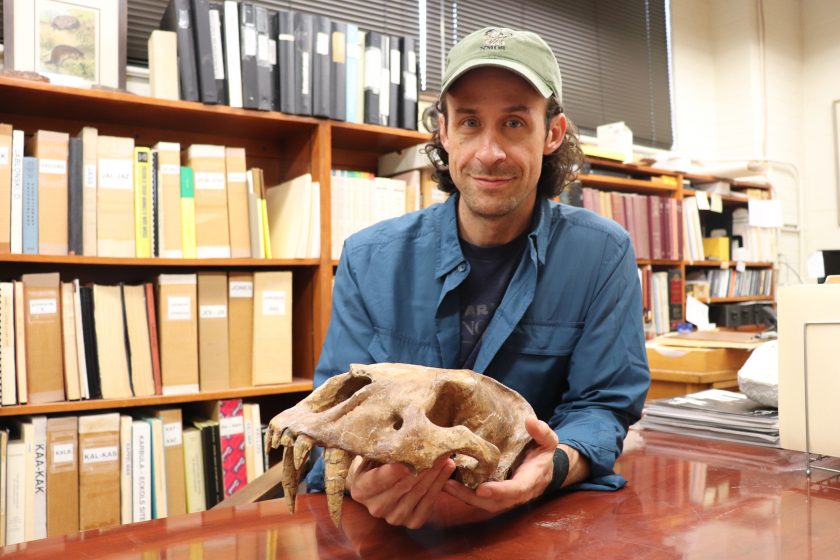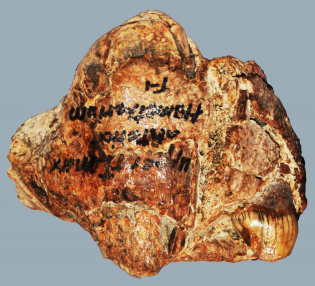‘Ugly’ Fossil Places Extinct Saber-Tooth Cat on Texas Coast
December 8, 2024

Important scientific finds don’t always come in the prettiest packages. Sometimes new discoveries come in little ugly rocks.
Such is the case of a 6-centimeter-wide, nondescript mass of bone and teeth that helped a doctoral student at the Jackson School of Geosciences expand the geographic footprint of a large cat that roamed the Earth tens of thousands of years ago.
“You can’t even tell what it is, let alone which animal it came from,” John Moretti, who led the research, said of the specimen. “It’s like a geode. It’s ugly on the outside, and the treasure is all inside.”

The fossil is lumpy and rounded, with a couple of exposed teeth that are a little worse for wear, having been submerged and tumbled along the floor of the Gulf of Mexico for thousands of years before washing up on McFaddin Beach, just south of Beaumont, Texas.
From there, it entered into the fossil collections of Russel Long, a professor at Lamar University, who found the fossil while beachcombing in the 1960s. After Long passed away, the fossil was passed to his former student, U.S. Rep. Brian Babin — who worked as a dentist for 38 years and immediately recognized the fossil as a jawbone and teeth.
But the identity of the fossil remained a mystery until Moretti entered the picture, working with Jackson School Professor Chris Bell and Will Godwin, a fossil curator at Sam Houston State University, which houses the specimen.
Moretti brought the fossil to be X-rayed at the Jackson School’s University of Texas High-Resolution X-ray Computed Tomography Facility. The scan revealed there was more to this mass than met the eye: a hidden canine tooth that had not yet erupted from the jaw bone is embedded within the specimen, out of plain sight.
It was just what Moretti needed to identify the fossil as belonging to a Homotherium, a genus of large cat that roamed much of the Earth for millions of years.
The fact that the tooth was nestled in the jawbone indicated that the cat wasn’t fully grown when it died. It also helped protect the tooth from the elements.
“Had that saber tooth been all the way erupted and fully in its adult form, and not some awkward teenage in-between stage, it would have just snapped right off,” Moretti said. “It wouldn’t have been there, and we wouldn’t have that to use as evidence.”
Homotherium spanned across habitats in Africa, Eurasia and the Americas. It was a large, robust cat about the size of a jaguar, with an elongated face, lanky front legs, and a sloping back that ended in a bobtail. Their serrated canine teeth were covered by large gum flaps, similar to domestic dogs today.
Homotherium fossils have been found in several areas of Texas, but this fossil shows for the first time that the big cat roamed the now-submerged continental shelf that connects Texas and Florida. Scientists hypothesize that this stretch of land was a neotropical corridor, a humid strip of grassland that enabled animals such as capybaras and giant armadillos to move from Mexico to Texas to Florida without venturing farther north.
The discovery that Homotherium lived along this corridor gives scientists a small glimpse into the ecology of this landscape during the Late Pleistocene, Moretti said, with big carnivores such as these cats helping to shape the broader animal community by tamping down prey-animal populations and influencing regional biodiversity.
The findings were published in The Anatomical Record.
Back to the Newsletter